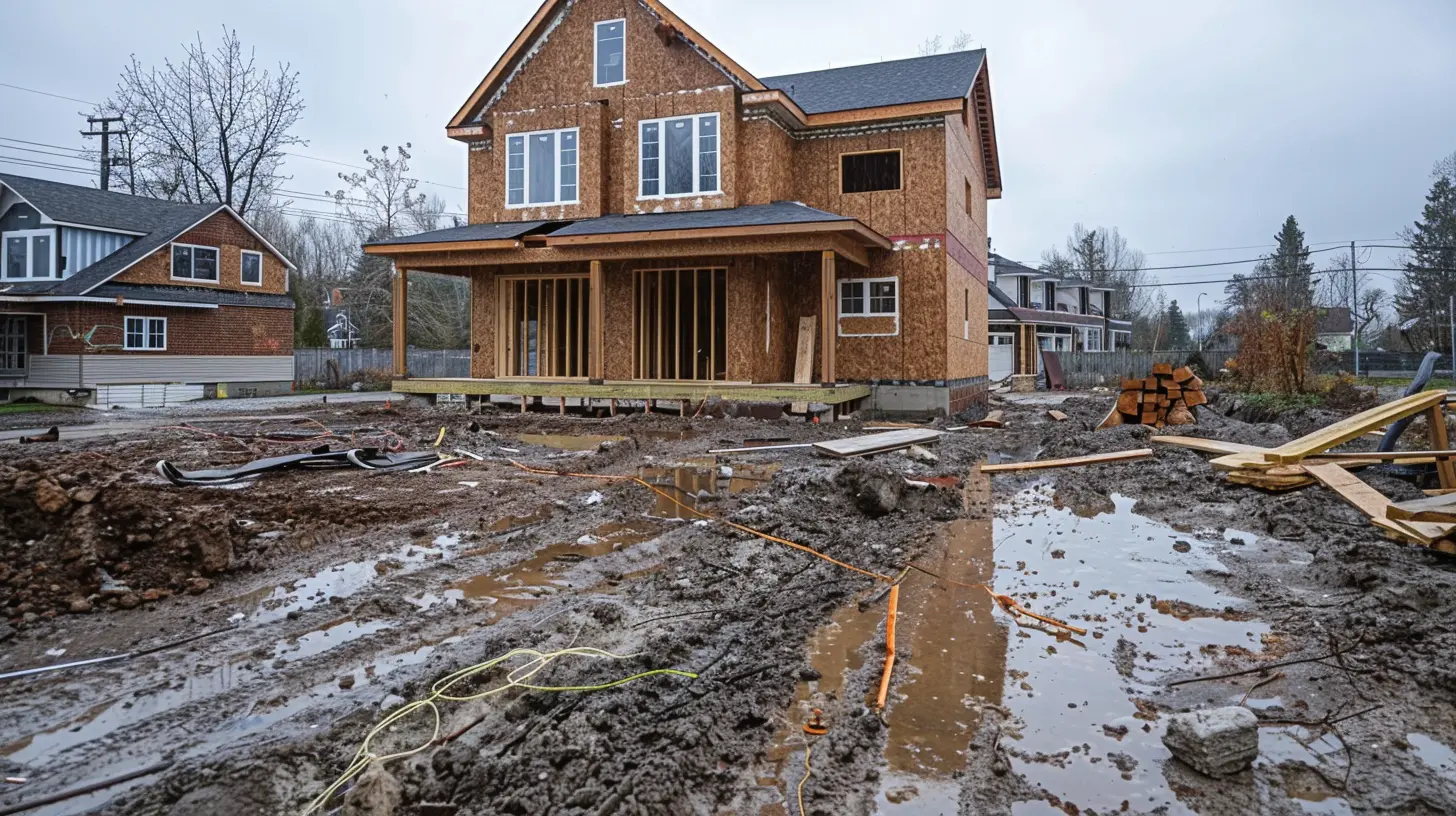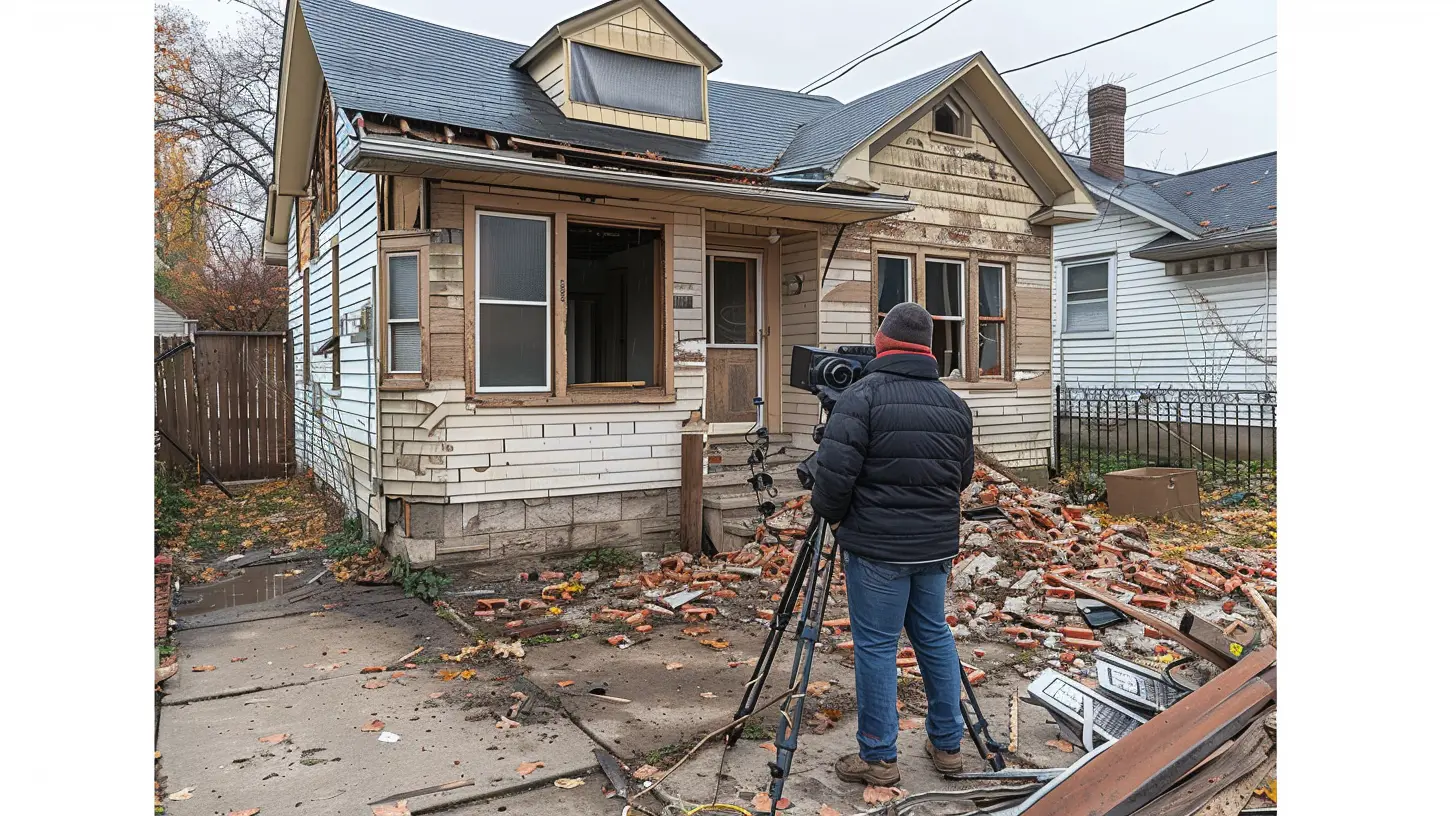Assessing Structural Problems in Fixer Uppers Before You Buy
31 July 2025
So, you've got your eye on that charming old house down the street—the one with peeling paint, a sagging porch, and a price tag that makes your wallet do a happy dance. Fixer-uppers can be a great investment. They offer the chance to create your dream home or flip for a tidy profit. But before you dive headfirst into a renovation adventure, there's one thing you've got to do first: assess those sneaky structural problems.
Let’s be real—no matter how enticing a deal looks, structural issues can turn your dream project into a financial black hole. So today, we’re peeling back the layers of fixer upper homes and diving deep into how to assess structural problems before you sign on the dotted line.
Why Bother Assessing Structural Problems?
Think of a house like a human body. The roof is the hat, the walls are the skin, and the structure? That’s the skeleton. And just like a body, if the bones are broken or weak, everything else starts to fall apart.Skipping a proper structural assessment is like buying a used car without looking under the hood. Sure, it looks nice now…but once it’s yours, anything that breaks is coming out of your pocket. And trust me, foundation and structural repairs aren't cheap—they can run into the tens of thousands.
First Thing’s First: What Exactly Are Structural Problems?
Structural issues go way beyond cosmetic wear and tear. We’re not talking about chipped paint or outdated cabinets. We're talking about the bones of the house—the elements that keep it standing strong and safe.Here's what typically counts as a structural problem:
- Foundation cracks or movement
- Uneven or sagging floors
- Bowing or cracked walls
- Roof sagging or leaking
- Rotten framing or beams
- Water damage to support structures
- Termite or pest damage to wood structures
These kinds of problems compromise the house’s integrity. And if they’re serious enough, they can even make the place unsafe to live in.
Common Signs of Structural Damage
Now, you might not be a structural engineer—and that’s totally fine. But there are a few red flags you can spot early on, even during a casual walk-through. Keep your eyes peeled for the following, and make notes:1. Cracks in the Foundation
Hairline cracks are fairly normal in older homes. But big, deep cracks—especially horizontal ones—in the foundation? That’s a nope. They could mean the house is settling unevenly or that there’s been shifting in the soil beneath it.2. Doors and Windows that Stick
Are the doors hard to close? Do windows no longer fit in their frames correctly? This could mean the underlying structure has shifted. When the house moves, it wrecks the balance of frames and openings, making them stiff or uneven.3. Sloping or Uneven Floors
Walk around the house. Do you feel like you're suddenly walking uphill in the living room? Bring a marble if you want to get fancy. Set it on the floor and see if it rolls without help. Sloped floors might hint at foundation trouble or damaged supports below.4. Gaps Between Walls and Ceilings
Little gaps in corners can be a big deal. If there’s space forming between where the wall meets the ceiling or floor, it could mean there’s movement in the structure.5. Sagging Rooflines
Step outside and look up. Is the roofline straight as it should be? Any dips or curves could be a sign the internal supports (like roof trusses or rafters) are damaged or decaying.
Don’t Skip the Home Inspection—Seriously
Okay, so you’ve done your own walk-through and noticed a few things that might be structural. Still interested in the property? Then it’s time to bring in the pros.A licensed home inspector is your best friend right now. They’re trained to spot things you might miss—like subtle shifts in elevation, hidden mold, or under-the-radar water damage.
Better still, if they suspect a major issue, they'll often recommend bringing in a structural engineer. Think of that engineer as a doctor for your house’s skeleton. They’ll diagnose the problem and recommend a fix.
It might cost a few hundred bucks to hire one, but it beats spending tens of thousands later down the line.
The Role of the Structural Engineer
So, what does a structural engineer actually do?If the home inspector raises structural concerns, a structural engineer steps in to:
- Evaluate the extent of the damage
- Determine the cause (foundation settling, termite damage, etc.)
- Recommend specific solutions
- Estimate repair costs (roughly)
- Provide a report that you can use in negotiations or mortgage lending
Their assessment could be the deciding factor in whether you move forward or walk away.
Be Wary of Water Damage
Water is like the silent ninja of house destruction. It seeps quietly into places you can't see and does major damage without making a sound.Spot any of these signs? You're likely dealing with water damage:
- Musty smells in the basement
- Mold or mildew on walls
- Bubbling paint or discoloration
- Warped floors
- Rusted metal supports or nails
Constant moisture can rot wood framing and erode foundations. It’s like termites—slow but deadly.
Termites: The Tiny Terrorists
Speaking of termites...You’d be amazed at the damage a colony of termites can do if left undisturbed for long enough. These little guys can hollow out beams and joists, leaving them structurally useless. Unfortunately, termite damage often isn't visible until it's really bad.
Look out for:
- Mud tubes on basement walls
- Hollow-sounding wood when tapped
- Blistered wood or paint
If termites are suspected, bring in a pest specialist. Better now than after closing.
Talking Dollars and Sense: How Much Do Structural Repairs Cost?
Let’s talk turkey. Just how much can all this cost?Here’s a rough breakdown (keep in mind, these vary wildly depending on location and severity):
- Foundation repair: $5,000 to $30,000+
- Roof replacement (if structural): $7,000 to $20,000
- Floor joist repair: $1,000 to $5,000
- Beam replacement: $1,500 to $10,000+
- Termite treatment: $1,000 to $3,000 (add more if repairs are needed)
Suddenly that “cheap” house might not be such a steal, huh?
Can You Still Buy a Fixer Upper with Structural Problems?
Of course! But you’ve got to go in with open eyes and a healthy renovation budget.Here’s what smart buyers do:
1. Get detailed inspections – structural, pest, roofing—you name it.
2. Ask for repair estimates – get quotes from contractors, not just guesses.
3. Use findings to negotiate – ask the seller to lower the price or cover repairs.
4. Plan your budget properly – always include a contingency fund. Always.
Sometimes structural issues are minor and totally manageable. Other times, you might be biting off more than you can chew. It’s all about being prepared with the right info.
When to Walk Away
Some fixer-uppers just aren’t worth fixing. If the home:- Has extreme foundation damage
- Has massive termite infestation
- Shows signs of dangerous mold throughout
- Needs structural work that exceeds the home’s market value
…it might be time to say goodbye. There are plenty of other fish (or houses) in the sea.
Final Thoughts: Be Smart, Not Sorry
Buying a fixer upper is like dating someone with “potential.” Sometimes it works out beautifully. Other times, you invest a whole lot of time and money just to get your heart (or wallet) broken.Don’t fall in love blindly. Be critical. Ask questions. Bring in the experts. And most of all—know what you’re getting into before you commit.
Structural problems aren’t necessarily deal-breakers…but they are deal-definers. Take the time to assess them right. Your future self will thank you.
all images in this post were generated using AI tools
Category:
Fixer UppersAuthor:

Basil Horne
Discussion
rate this article
1 comments
Jett Bailey
Great insights! I’d emphasize the importance of hiring a qualified inspector early in the process. Their expertise can uncover potential issues that might not be visible, ultimately saving buyers from costly surprises down the line.
August 9, 2025 at 4:05 AM

Basil Horne
Thank you! Hiring a qualified inspector early is indeed crucial for identifying hidden issues and avoiding unexpected costs. Your point is well taken!


